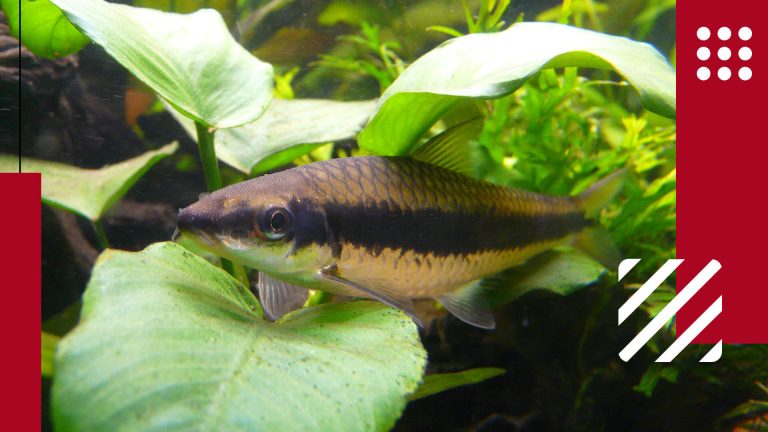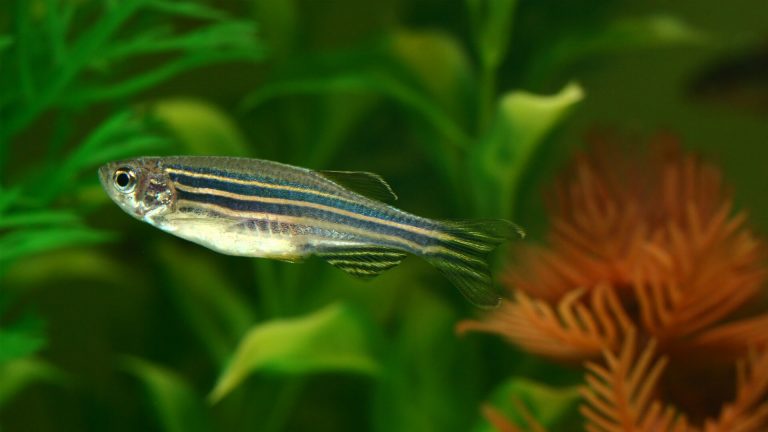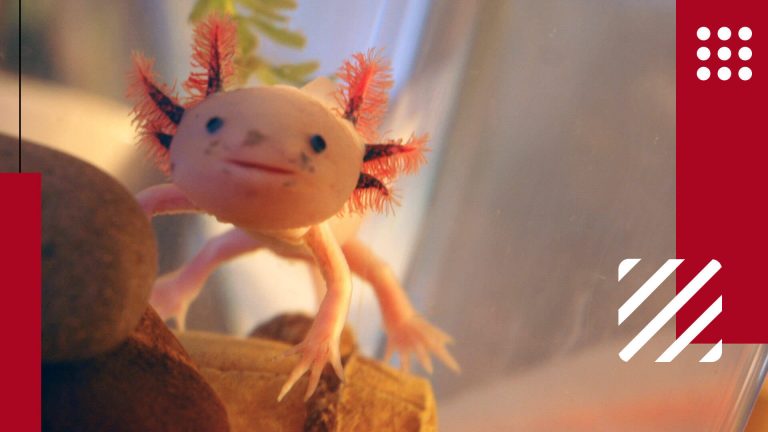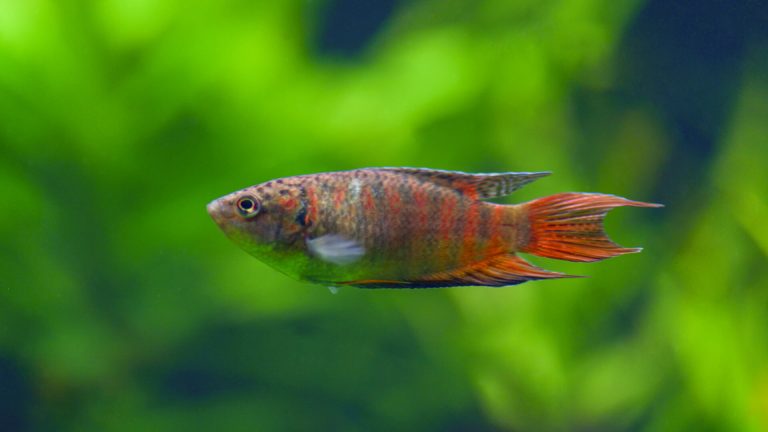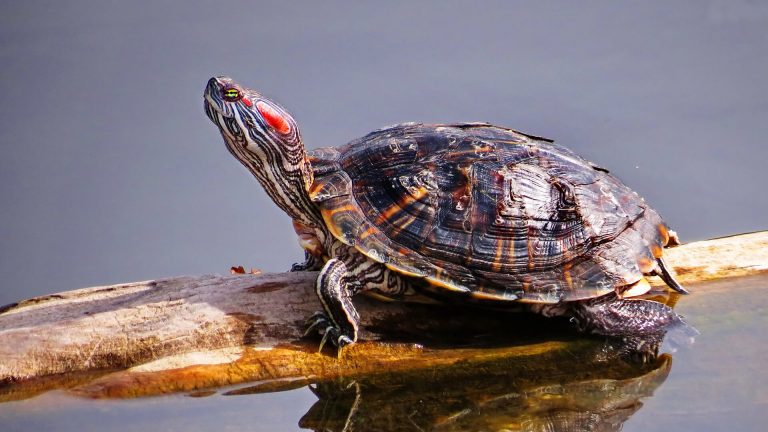The catfish known as Farlowella or twig catfish encompasses a group of 37 species. However, within the aquarium trade, only two species are commonly found: F. Acus and F. Vittata. It is important to note that F. Acus is considered endangered, and special regulations apply to its conservation. On the other hand, F. Vittata is more prevalent in the aquarium trade.
Originating from South America, particularly Venezuela, Colombia, Amazon, Orinoco, Panra River, and the Guyana Shield, Farlowella catfish inhabit dense and flooded areas with submerged roots and branches. They possess remarkable camouflaging abilities, blending effortlessly with their surroundings due to their coloration and their ability to remain motionless.
Distinctive Features of Twig Catfish
| Scientific Name | Farlowella spp. (various species) |
| Lifespan | Up to 15 years |
| Color | Brown or gray with mottled patterns |
| Size | Up to 6 inches |
| Health Risk | Low |
| Tank Size | Minimum 35-40 gallons |
| Water pH | 6.5-7.5 |
| Temperature | 72-78°F (22-26°C) |
| Filtration | Moderate to strong |
| Tankmates | Peaceful and non-aggressive fish |
| Unique Trait | Elongated body with twig-like appearance |
| Famous For | Camouflage and twig-like appearance |
| Temperament | Peaceful |
| Maintenance | Low |
| Adaptability | Moderate |
| Behavior | Not recommended for young children |
| Personality | Nocturnal and bottom-dwelling |
| Social | Can be kept individually or in small groups |
The Farlowella catfish exhibits a distinctive appearance with an elongated body adorned with two lateral dark strips that span from head to tail. Its body is protected by bony plates known as scutes. The needle-like nose, wide head, and gradual tapering behind the eyes are characteristic features. The pectoral fins are positioned closely, and when the catfish rests on a surface, the pectoral and anal fins extend out to the sides. Their brown and black coloration mimics a twig, while females tend to have a smaller, rounder rostrum compared to males. Upon closer observation, intricate patterns can be seen on their body. The catfish typically has a light brown hue, with a darker brown line that fades towards the tail.
The suction cup-like mouth of the Farlowella catfish enables it to firmly attach itself to objects such as logs, roots, or sticks. It spends most of its time motionless, relying on this ability to feed on algae. While they rarely swim, they exhibit small hops as they move forward to consume algae.
In an aquarium setting, Farlowella catfish can grow to around 6 inches in length. Their lifespan in captivity ranges from 5 to 15 years. It is important to note that this species is sensitive to water conditions, and any deterioration in water quality can significantly impact their health and longevity. Proper care and maintenance of the aquarium environment are crucial for their well-being.
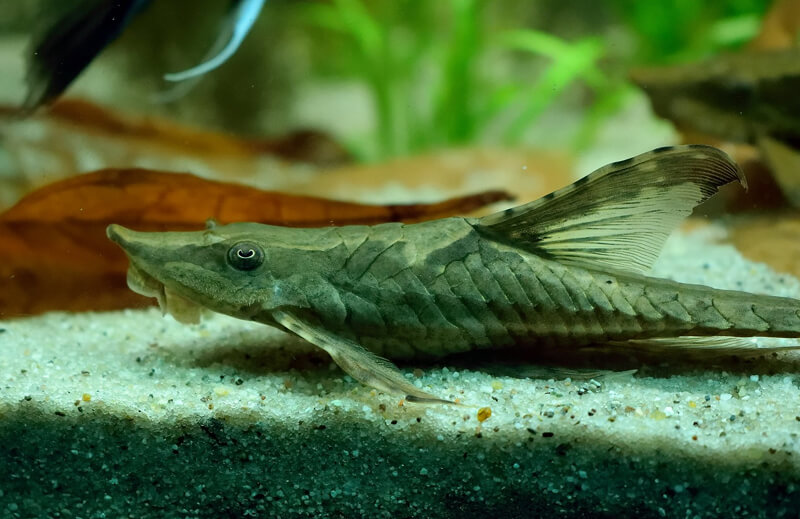
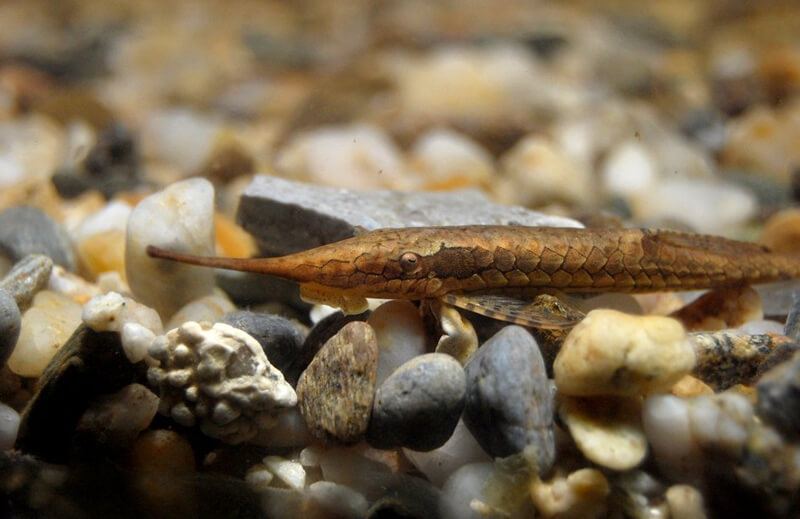
How to Take Care of Pet Twig Catfish?
Having a pet Twig Catfish is a unique and rewarding experience. Their remarkable appearance and peaceful nature make them fascinating additions to any aquarium. Watching them effortlessly blend in with their surroundings and delicately move around is a sight to behold. Here are some tips to take care of pet Twig Catfish:
How to Setup Tank For Pet Twig Catfish?
Create an aquarium setup that resembles a serene, dimly lit stream to provide an ideal environment for your Twig Catfish. Use rounded stones or sand substrate, leaf litter, ample driftwood branches, and live plants on the tank bottom to maintain water quality. Incorporate low light-tolerant plants and structures that serve as perches and hiding spots for the fish. Proper oxygenation is crucial, so consider installing a suitable water current in the tank. As Twig Catfish are sensitive to deteriorating water conditions, regular maintenance and weekly water changes are essential to ensure their well-being.
For optimal living space, a tank size of 35-40 gallons is recommended, providing enough room for the fish to move around comfortably. If housing multiple catfish, a larger tank should be considered. Adequate filtration is vital, and a durable hang-on-back filter is a suitable choice. Additionally, a sponge filter can enhance biological filtration and promote aeration. Incorporating water plants such as wisteria, hornwort, and floating plants can add to the overall aesthetics.
Maintain the water temperature between 72-78 degrees F, with a pH level of 6.5-7.5 and soft water hardness. Ideally, the water should have a hardness of 3-10 degrees H, and nitrates should be kept below ten. It is crucial to dechlorinate new water using a reliable dechlorinator before adding it to the tank. Gradually introduce the treated water using a fine hose to prevent any shock to the fish. By following these care guidelines, you can ensure a suitable and thriving habitat for your pet Twig Catfish.
What to Feed Pet Twig Catfish?
The Twig Catfish, being a master scavenger, is an easy-to-feed fish that isn't picky when it comes to food. It obtains its essential nutrition from leftover food and algae found at the bottom of the tank. In addition to this, you can offer it flake food, sinking herbivore pellets, freeze-dried bloodworms, daphnia, brine shrimp, mosquito larvae, and black worms as occasional treats. Since it is primarily vegetarian, fresh vegetables like cucumber slices, blanched spinach, kale, zucchini, medallions, broccoli, and lettuce can be included in its diet. Dried algae in the form of wafers or spirulina tablets are also suitable options.
It is important to provide a varied diet to ensure the well-being of the Twig Catfish, as a lack of proper nutrition can lead to health issues or even mortality. The Twig Catfish possesses small yet specialized spoon-shaped teeth that allow it to grind wood and consume algae, which are its primary sources of nutrition. It has a natural aversion to troublesome algae such as brush or beard algae, preferring to focus on the types that form a substantial part of its diet.
Health Concerns of Pet Twig Catfish
When it comes to the health of pet Twig Catfish, there are a few key considerations to keep in mind. One common concern is water quality. Twig Catfish are sensitive to deteriorating water conditions, so it is crucial to maintain proper filtration and perform regular water changes to ensure optimal water parameters. Poor water quality can lead to stress, diseases, and even death.
Another health concern is nutrition. While Twig Catfish are generally not picky eaters, it is important to provide them with a balanced and varied diet. A lack of proper nutrition can result in malnourishment and weakened immune systems, making them more susceptible to diseases. Ensure their diet includes a mix of algae-based foods, sinking herbivore pellets, and fresh vegetables to meet their dietary needs.
Lastly, be mindful of any signs of illness or abnormal behavior in your pet Twig Catfish. Look out for symptoms such as loss of appetite, abnormal swimming patterns, discoloration, or visible signs of infections. If you notice any concerning signs, it is recommended to consult with a veterinarian experienced in fish health to diagnose and treat any potential health issues promptly.
Frequently Asked Questions About Twig Catfish
Some of the generally asked questions about Twig Catfish are answered below:
Are Twig Catfish suitable for beginners?
Twig Catfish can be suitable for beginners with some prior experience in maintaining aquariums. They have specific care requirements, such as water quality and diet, which need to be properly addressed. However, with the right research and dedication to their care, beginners can successfully keep Twig Catfish.
Can Twig Catfish be kept with other fish?
Twig Catfish are generally peaceful and can be kept with other peaceful community fish. However, due to their specialized feeding habits and sensitivity to water conditions, it's important to choose tank mates that won't compete for food or produce excessive waste.
Do Twig Catfish breed in aquariums?
Breeding Twig Catfish in aquariums can be challenging and is not commonly achieved. Their specific breeding requirements, including water conditions and suitable breeding pairs, can make it difficult for most hobbyists to successfully breed them. It is more common for them to breed in natural environments.
Are Twig Catfish suitable for a planted tank?
Twig Catfish can be compatible with a planted tank as long as the plants are hardy and can tolerate their grazing behavior. However, keep in mind that they may uproot or damage delicate plants. Providing ample hiding spots and suitable vegetation for grazing can help create a balanced environment.


